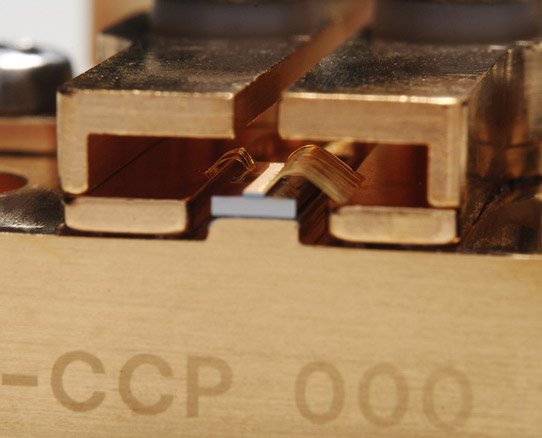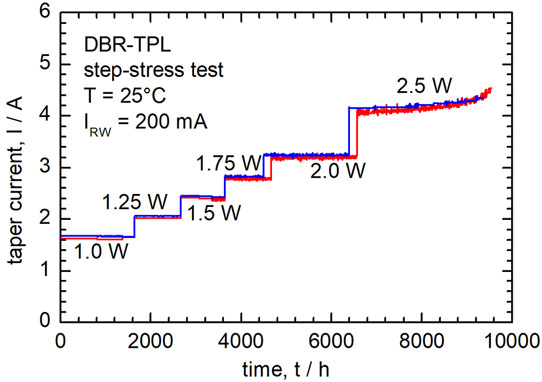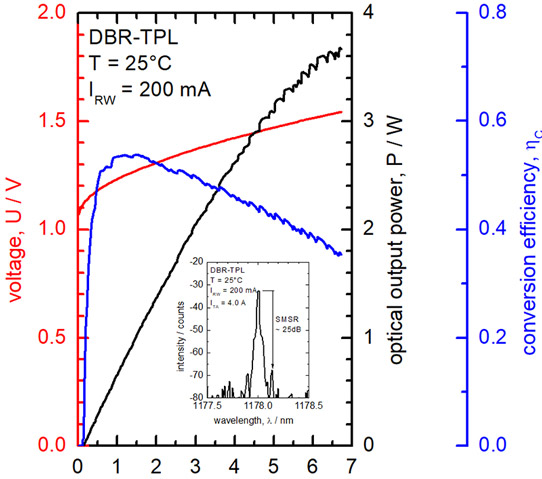- News
9 October 2017
FBH develops 1178nm InGaAs QW DBR laser diode yielding frequency-doubled yellow 589nm laser module
Laser diodes emitting in the yellow spectral range are key components for applications such as laser cooling of sodium atoms and time-resolved fluorescence spectroscopy, notes Berlin-based Ferdinand-Braun-Institut, Leibniz-Institut für Höchstfrequenztechnik (FBH) – which researches compound semiconductor-based electronic and optical components, modules and systems. However, this yellow spectral region is currently not accessible directly with laser diodes. One solution for realizing such sources is based on high-brilliance laser diodes with a highly strained indium gallium arsenide (InGaAs) quantum well (QW) emitting at 1178nm and subsequent non-linear frequency conversion (R.Bege et al, ‘Watt-level second-harmonic generation at 589nm with a PPMgO:LN ridge waveguide crystal pumped by a DBR tapered diode laser’, Opt. Lett., vol.41, no.7, p1530 (2016)).

Figure 1: Tapered DBR laser diode mounted on CS heat sink.
In 2015, FBH developed watt-level distributed Bregg reflector (DBR)-tapered laser diodes (Figure 1) with a highly strained quantum well emitting at 1178nm. Based on these, reliability and optical output power could be further improved by optimizing the laser structure. The new laser diodes show an optical output power of about 3.5W, a nearly diffraction-limited beam with an M²1/e² value smaller than 1.5, and a narrow-band single-mode emission, which is indispensable for efficient frequency doubling in a nonlinear crystal.

Figure 2: Characteristics of DBR tapered laser at 25°C up to a taper current of 7A. Inset: emission spectrum at 4A (about 2.5W output power).
The power current characteristics up to a taper current of 7A are shown in Figure 2. The threshold current was less than 150mA and the slope efficiency was about 0.7W/A. The low series resistance of less than 100mOhm resulted in a record conversion efficiency of more than 45% at 2.5W output power. The spectrum at 2.5W shows a single peak at 1178.0nm with side-mode suppression of more than 30dB.
At the previously demonstrated power level of 1W the improved lasers show no degradation. A constant power step-stress test was hence performed to estimate the reliability of the new design. The optical output power was then successively increased to 2.5W, before degradation behavior became visible (see Figure 3), demonstrating that stable operation at 2-2.5W can be maintained for more than 5000hr.

Figure 3: Constant power step-stress lifetime transients of two DBR tapered lasers up to a power level of 2.5W.
FBH says that the lasers should allow the construction of rugged, miniaturized yellow-emitting laser modules with an output power of several hundred milliwatts, suitable for biomedical applications and fundamental research.
FBH Yellow lasers 560-590nm lasers


